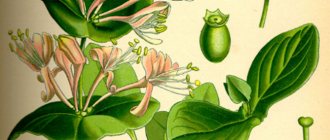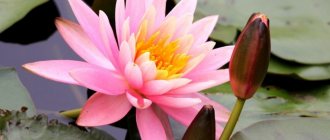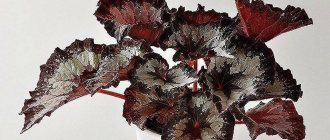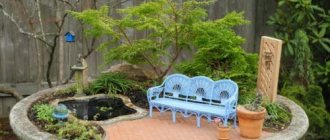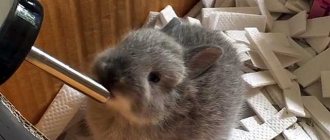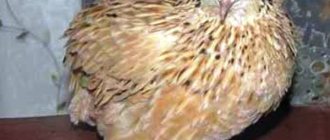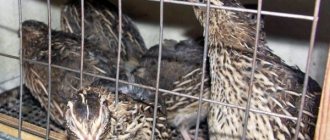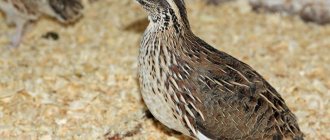101
no comments yet
0
Author of the article
Novikov Kirill
Reading time: 7 minutes
The increased body temperature and high metabolic rate of quails require constant replenishment of water reserves in the body. This forces poultry farmers to organize automatic watering systems, which are based on purchased or home-made drinkers.
DIY quail drinker: manufacturing instructions
Home breeding of quails requires a special approach to keeping these birds. The first thing that needs to be done is to properly arrange drinking bowls for quails so that the birds can have the opportunity to quench their thirst and not share precious water with other representatives of their species. For this purpose, special designs are used. All the equipment you need to assemble a drinking bowl yourself can be bought at a pet store or selected from available materials.
Note! A properly organized watering hole will help you save on feed costs and ensure acceptable cleanliness for keeping your birds, which will have a beneficial effect on their health.
Drinking bowls for quails.
Manufacturing procedure
The device is very convenient to use, since this quail drinker is almost automatic. But when working, you need to pay special attention to securing the nipples. There may be two options for making holes:
- turn a large bottle or canister upside down and make several holes in it;
- Drill one hole in the cork of a small bottle.
Having screwed the iron nipple into the thread, carefully process the joints so that there are no gaps. There may be water leakage through them. On the side opposite the holes, make several holes through which you thread string or wire for hanging.
Only by providing young animals with high-quality feed and fresh water can you raise healthy and strong birds. And this is a guarantee of high egg production of quails and the quality of their meat.
Conditions and requirements for drinking bowls for quails
Quails are birds that are not known for their neatness. When feeding, they can scatter grains and other types of food around, spill water, and leave droppings in the house. This can contribute to significant food wastage, as well as an unkempt and untidy cage. If the organization of feeding and watering is unsuccessful, this state of the poultry house is disastrous, because it is important for quails to eat and drink consistently for their harmonious development.
When choosing the type of drinking bowl for quails, consider the following:
- The ideal drinker size should match the age of the quail you are raising. In addition to volume, other requirements are imposed on drinking bowls.
- The material from which the drinker is made must be hygienic, safe, and also be easy to clean.
- The design of the drinking bowl should facilitate convenient access to water.
- The owner must be able to systematically change the water.
- It is important that the drinker is easy to use and at the same time durable, so that the quails do not have the opportunity to turn it over.
- The volume of the drinker should be slightly higher than the volume of water intended for birds.
- The drinking bowl should protect the water from contamination with excrement.
- You should be able to remove the drinker for cleaning and return it to its place.
- The drinking bowls, made by yourself, should be placed on different sides of the cage. This is done so that each of the birds can get drunk.
- Additionally, multiple drinking bowls ensure that they are not contaminated, which means the quail will have access to water.
- It is not recommended to make combined structures where both food and water are placed.
Note! Along with these nuances, other requirements must be taken into account. So, only environmentally friendly materials are suitable for work. Containers are mainly made of stainless steel or food-grade plastic. It is undesirable to use wood and clay; if they are used, then in minimal quantities.
Types of drinking bowls for quails
Experienced quail breeders know that there are many types of drinkers. They can be classified depending on volume, openness and closedness, material of manufacture and method of placement. It is important to remember that drinking bowls for quails must meet all safety requirements, and only then belong to any of the types.
Note! It is very important that the drinking bowl is durable and easy to use, then it can be used for many years, feeding more than one generation of quails. It is not recommended to create structures combined with feeders. On the contrary, experienced poultry keepers hang them on different sides of the cage. This allows you to avoid getting the feed wet or getting the feed into the water when it comes to cup drinkers for quail.
Let's look at the most popular types of drinkers that are designed for quails:
- Vacuum drinkers are widely used, which operate on the principle of pressure using the atmosphere of external and internal spheres. Such drinkers are not suitable for small home breeding. They are used by huge poultry farms where the birds are kept on the floor and it is very difficult to figure out what the actual water consumption is.
- There are open drinking bowls, the manufacture of which is the simplest. You can use any safe container to set up an open drinking bowl. The advantage is the ease of manufacture, but the disadvantage of this type is that excrement and food fragments get into the water, chicks can drown if they get into a crush, and adults can easily knock over such a container.
- Cup drinkers are common, where liquid is supplied to the birds depending on the weight of the bowl itself. It contains a rod tongue that controls the flow of water. When this tab is reduced, water flows from the reservoir.
- Nipple drinkers, or as they are otherwise called - drip drinkers, operate on the principle of a regular washstand. Water may appear if pressure is applied to the tip.
- There are bunker drinking bowls made of plastic. To make such a drinking bowl, you only need a plastic bottle of sufficiently large volume.
- There are grooved drinkers. They are made from galvanized iron. The grooved drinker is attached to the wall or dug into the ground. This feeding option for birds is suitable if the flooring on the ground is systematically removed. This means that the water will not become polluted.
Types of drinking bowls
Birds are mobile creatures that leave a lot of garbage. To protect food and water from contamination, various types of equipment have been invented to ensure cleanliness.
There are several main types of drinkers. These include homemade ones, which can be made from scrap materials - for example, tubes and plastic bottles.
Open drinking bowls
An open drinker is the simplest design of a container into which water is poured. For hygienic reasons, this type of drinking bowl is the least convenient. It contains litter debris, pieces of food and bird droppings. An open drinker must often be taken out of the cage and cleaned of dirt, so serious poultry farmers are increasingly using this type of design. In addition, birds easily knock over water containers in cages.
The advantages of open drinking bowls are their low cost and the ability to easily make them at home. Read how to make a chicken coop for quails here.
The height of the drinkers should be small to prevent accidents: the quail may fall into the water and choke.
Nipple drinkers 1000
A common commercially available design is nipple drinkers for turkeys and quails. The device is a horizontally located metal or plastic tube with a valve, which, when pressed, releases a portion of water: this is how a traditional washbasin works. In this regard, the device received a second name - drip drinkers. Nipple drinkers may or may not have drip eliminators - cups for collecting water. The structures are aimed at different ages of quails and can be installed at different heights. There are options for drinkers for adult birds and young birds, differing in the force required to press the valve.
Read about the feather harvesting machine for quails in this article.
Advantages of nipple drinkers for quails:
- Hygiene – the cages are kept clean, the water is not clogged with food particles.
- Economy: birds consume exactly as much water as they need.
- The drinking bowl is safe, the birds do not get wet.
- The designs allow us to serve a large number of birds.
- Long shelf life of the device.
- It is convenient to add dissolved vitamins to water.
- You can make nipple drinkers yourself.
Beginning quail breeders sometimes ask whether it is difficult to train quails to use a drip drinker. In practice, birds themselves quickly master this mechanism, and there is no need for special training. For young birds, drinkers are set lower than for adult birds, and softer nipples are used.
The disadvantage of nipple drinkers is their high cost compared to other types. However, due to their convenience, they have received well-deserved popularity among quail breeders.
How to design a nipple drinker for quails
You can design a drip drinker yourself, although this will require some labor:
- To build a drinking bowl you will need: plastic tubes, a container for pouring water, nipple nozzles.
- Holes are drilled in the plastic pipeline to install valves.
- Nipple attachments are installed: for 15-25-day-old young animals, soft ones; for adult quails, hard ones are acceptable.
- The container-reservoir is connected to the pipeline (the joints can be sealed with Teflon tape).
- The reservoir is installed above the level of the tube to create the pressure necessary to supply water to the drinker.
The nipple drinking system can be installed both inside and outside the cages.
Cup
The designs of cup-type drinkers consist of a small cup, a reed float and a ball that blocks the flow of water. When the drinking bowl is filled with water, the tongue floats on the surface and no water flows into the cup. When the water in the cup runs out and the float goes down, the ball opens the valve to allow water to enter.
Advantages of cup drinkers:
- Quails are constantly provided with clean water.
- The size range of drinkers is designed in a wide range - from chicks to adult birds and animals.
- There are design options for installation in cages, as well as floor-mounted ones.
- They do not require complicated manipulations with the mechanism from the bird.
The disadvantage of cup drinkers is that a structure of this type is difficult to make independently. It’s easier to purchase ready-made devices in stores.
Microcup
Cup structures for watering chicks are small in size, so they are often called microcups. The action of the drinker is regulated by the weight of the cups in which the water flows. As the cup fills from the common reservoir, the drinker becomes heavier, after which the water supply to the drinker stops.
The required drinker option is selected based on:
- age of birds;
- number of young animals;
- conditions of detention (cage or floor).
To clean the drinker, you just need to remove the device from the cage, wash it, and then put it back. This design is excellent for keeping quail in an apartment, but the quality of the water in the microcup drinker must be constantly monitored and the water replaced with fresh water if it becomes contaminated.
Automatic
Automatic drinkers are used in poultry farms and large farms. The peculiarity of this type of devices is that they practically do not require the intervention of the poultry farmer in providing the birds with water. The liquid in the dispensing containers comes from the main reservoir. It is enough for the poultry farmer to keep the water in the tank fresh and periodically check the functioning of the system in the cages. Read about the quail business at this link.
The most widespread are the so-called vacuum drinkers. The device consists of a water tank (this can be a large 7-10 liter plastic bottle or canister) and a tray into which the neck of the tank is placed, which looks like a lid with a circular groove. The flow of water is regulated due to physical properties - the water pressure in the tank is balanced by air pressure.
Advantages of vacuum drinkers:
- Do not require frequent human intervention.
- It is convenient for the bird to use the drinking bowl.
- Fresh water is constantly added as it is used.
- The drinking bowl provides water for 10-15 quails at a time.
- Distributed and affordable.
- Easy to construct with your own hands.
To independently assemble a vacuum automatic drinker, you need to select a stable tray on which a plastic bottle will be attached. The structure is filled with water and turned over.
Vacuum drinkers located on the floor, however, require cleaning the tray as various debris gets into it.
Cup drinking bowl for quails
The cup drinking system is smaller in size than the nipple system, and its most important link is the small floating tongue. This tongue is connected to a ball that stops the flow of water. When the tongue floats on the surface, no new portions of water enter. But as soon as it lies on the bottom, the ball opens a channel. Soon the bowl will be filled with water again.
Main properties of a cup drinker:
- continuous supply of water;
- wide size range;
- the ability to equip the structure inside the cage or on the floor;
- ease of handling (it will be easier for quails to drink);
- It is difficult to create such a drinking bowl.
Note! The easiest way is to make open drinking bowls with your own hands. However, the simplicity of such structures results in their low hygienic characteristics. Pieces of feed, bedding debris and droppings easily get there. You will have to remove the drinking bowl every day, and sometimes even more often, and clean it. Quails will also constantly knock over water tanks.
Features of cup and automatic drinkers
The cup system works in a similar way to a toilet cistern. Cups are connected to a container of water with thin hoses, each of which has a float valve. When the quail drinks water, the valve moves and opens a “passage” through which water is poured. Once the cup is full, the valve closes the hole.
It is extremely difficult to make such a design yourself. It's better to buy it in a store.
Factory-made drinking bowls most often operate on the principle of cup structures. All a poultry house that has an automatic drinker needs to do is fill the reservoir with water.
The automatic system is often used in industrial poultry farms. It is not cost-effective to purchase it for a small number of birds.
Nipple drinkers for quails
In addition to the basic nuances, it is necessary to take into account the differences between the designs of drinkers. The nipple system is a metal or plastic tube running parallel to the floor. The height of the tube is adjusted to the growth of the birds being served. It is worth noting that the nipple design is sometimes called drip. Its advantages are:
- constant purity and freshness of water;
- absence of excess dirt in the cage;
- long-term operation;
- the opportunity to supply quails with medicines, including vitamins.
Bowls are usually connected directly to pipelines. The containers are placed as high as possible, because increased pressure improves the operation of the system. The nipple is installed by drilling holes in the pipe. Young birds are watered using soft nipples. Drip bowls are placed in a randomly chosen place, but they are very expensive and are justified only when keeping a large number of livestock.
Nipple drinkers for quails (Click on photo to enlarge).
Vacuum drinkers for quails (Click on photo to enlarge).
conclusions
- Water bowls for quails vary in design. You can choose convenient devices for both small and large farms.
- The most common and affordable are vacuum automatic drinkers.
- Nipple drinkers are more expensive, but are convenient when keeping a large number of quails.
- Any type of drinker must be properly operated and kept clean to maintain the health of the birds.
Read how to make a quail brooder here.
Vacuum drinkers for quails
This type of device is used most often. Large 7-10 liter bottles (or canisters) are used as water containers. The system also includes a tray, inside of which there is a neck. Regulation of water flow occurs by balancing the pressure in two vessels. The advantages of vacuum drinkers are:
- maximum autonomy;
- convenience for quails;
- continuous supply of fresh water;
- the ability to water 10 to 15 birds at the same time;
- affordable price;
- ease of self-construction.
Note! Automated vacuum drinkers must be equipped with a stable tray. A plastic bottle is attached to it. It is placed upside down. It is not recommended to place vacuum drinkers on the floor. They clog too easily.
How to choose a drinking bowl design for quails
Every poultry house owner is interested in ensuring that the birds do not need water, while the premises remain clean and tidy. In addition, the requirements include reducing the risk of clogging the water pan, as well as the ability of the owner to visit the poultry house as little as possible.
Based on the experience of quail breeders, nipple systems are most convenient. Using them, you don’t have to worry about accidentally clogging the water with bird bedding or spilled food. In addition, you will have to fill containers less often. Time consumption is significantly reduced. The remaining drinking systems are selected taking into account all the recommendations of specialists, as well as the required size of the tank.
A very large bowl can lead to frequent drowning of chicks. In the process of choosing a drinker, take into account:
- number of animals in the cage;
- age of individuals;
- specific conditions of detention.
What kind of water to give quails
Birds need constant access to clean and fresh water. You shouldn’t pour the liquid too cold; you need to warm it up a little before serving. Some drinking bowls may contain food debris or pieces of litter, so the water should be changed periodically, in open containers - 2-3 times a day.
It is impossible to say which drinking bowls are better or worse. Their choice depends on many factors, including the size of the population, age and type of keeping of birds. Do-it-yourself drinking bowls will allow you to use available materials and save money. Most often, such equipment is used for keeping birds in private backyards or small farms.
How to make drinking bowls for quails with your own hands
Note! Various original ideas, including preparing a drinking bowl from a plastic bottle, will definitely not be the best solution. They look beautiful on paper and on the Internet, but in real life they turn out to be impractical. But since we touched on this topic, we will talk about them too.
Nipple designs are the simplest and most effective. They are constructed using:
- plastic pipes and plugs made of the same material;
- couplings;
- fittings;
- electric drills;
- drills with a diameter of 1 cm;
- plastic clamps;
- containers for drinking water.
How to make a nipple drinker with your own hands
Before you set up a homemade nipple drinker with your own hands, you need to find out what the operating principle of such a device is. We recommend that you sketch out the drawings in advance. Such a device works on the principle of transmitting water pressure directly at the moment when the birds approach the drinking bowl. Liquid passes through the nipple. This is very convenient, especially for the owner who systematically cleans the container. In addition, the liquid is not contaminated by food or excrement. Accidentally spilled liquid is also not lost, but can be stored in drip eliminators.
The nipples themselves must be installed in a pipe that connects directly to the tank into which the water is poured. The nipple can also be connected directly to the water supply. The process of supplying liquid to quails becomes automated, which greatly simplifies the task.
There are two options for making nipple drinkers:
- The first option is not the simplest and is suitable for those who want to bring this device to perfection and bring it closer to factory technology.
- The second option is much easier, but in the end you will get an excellent waterer that will serve for a long time for the cage with birds.
A nipple drinker is made of a pipe into which nipples are screwed.
In the first situation you will need:
- plugs;
- nipples;
- pressure regulator;
- knife;
- screwdriver;
- reservoirs that can catch droplets;
- drainage;
- plastic pipe with a diameter of 10-12 cm.
Making a nipple drinker implies that the water will come from the water supply.
The installation process ahead of you is quite simple and easy to complete:
First of all, a section of 100 cm in length and 2.5 cm in diameter is cut off from the pipe. A plug is put on one edge of the pipe. Next, a strictly horizontal line is drawn along the highway. Using it, carefully measure out the locations for 5 holes, which are placed at equal distances. Using a knife, the burrs surrounding the holes are removed, and the chips are poured out through the free edge. Connect the water supply. If possible, install a drip catcher at each nipple.
On a note! If you don’t want to spend money on purchasing such a device, you can make it yourself using the bottom of a plastic bottle. Make stands and place under each of the nipples.
Next, a hole is cut in the upper edge of the cage away from the entrance. The prepared tubular structure is inserted into the cage through the outer door. The other end, onto which the fitting is screwed, is brought out to the outside. Plastic clamps will help secure the structure horizontally at the top of the cage; supply hoses are connected to the fittings.
Carry out a trial procedure for supplying the drinking bowl with water. If everything functions without leaks, then you can fly the birds.
Note! To make a nipple drinker, it is better to use a pipe with a square cross-section. Pay special attention to some technical details that will contribute to the proper operation of the drinker. The nipples must be installed so that the water level is always above them. If you neglect this rule, the nipples will not work. Also remember that there must be enough air in the pipe.
If the above option seemed incredibly complicated to you, then start with something simple. The basis of such a drinking bowl will not be a pipe, but a container.
In order to make such a design, you need:
- a container that can be a 5 liter plastic bottle;
- reservoirs that will catch drops;
- brackets;
- screwdriver;
- nipples;
- knife.
Here are instructions to help you make a drinking bowl:
- First of all, mount the nipples into the lid of a 5 liter container.
- Drill the holes with a screwdriver.
- Attach the nipple to the cap and place it on the bottle.
- Secure all drip eliminators at a level that is comfortable for birds.
- Place the drinker in an upside down position. For this you will need brackets.
- If you have more than 15 birds, it is recommended to install several such drinkers.
A nipple drinker for quails can be made from a simple 5-liter plastic bottle.
Note! The rule here is that the water level must be higher than the existing nipple edges.
Making a nipple system
general information
Such drinking bowls for farm quails work like a washstand in the country: the birds move the lever with their beak and water drips. To prevent liquid from falling on the floor, drop catchers - micro bowls - are installed.
Making homemade drip drinkers for quails is not difficult.
Materials
You will need: a plastic plumbing pipe (length 100 cm, diameter 2.5 cm), a plug for the pipe, a drill, electrical tape, plumbing fasteners along the diameter of the pipe, a coupling, a fitting, five drop eliminators and the same number of nipples.
Making a blank
To understand how to make a drinking bowl, read the instructions below.
Draw a longitudinal line on the pipe with a pencil and drill 5 holes along this line for nipples in increments of 15-20 cm. Remove burrs and sawdust. Install a plug on one side of the pipe, and a coupling and fitting on the other.
Insert the nipples into the drilled “sockets” and put drip eliminators on them.
Assembling the structure
Make a slot in the cage wall (in the upper corner) for a drinking bowl. Using plumbing fasteners, fix the structure to the ceiling of the “quail house” so that the edge of the pipe with the coupling is outside. Attach the hose connecting the structure to the water tank to the fitting. If you keep birds in an aviary on the floor, attach the quail drinker to the wall at a height of 25 cm.
It is important
To ensure that the quails receive the liquid properly, hang the container with water above the nipple structure.
For chicks up to 30 days old, choose nipples with a soft tip, and for grown quails and quails, choose nipples with a hard tip. The ideal ratio is one nipple per bird.
Be sure to show your birds how to use the nipple system. They won't figure it out on their own.
Experienced breeders do not recommend using combined drinkers and feeders, as the water in them quickly becomes clogged due to the ingress of food particles.
Do-it-yourself vacuum drinker for quails
You can make not only a nipple drinker, but also a vacuum drinker with your own hands. First, in the lower part of the plywood sheet located on the facade of the cage, 5 channels are drilled with a milling cutter. The diameter of the cutter is 4.4 cm. Then take a plastic pipe (its length coincides with the width of the cage). You need to punch 6 holes vertically in the pipe, 5 of them are clearly aligned with the holes in the plywood. This will allow the quail, sticking its head out, to easily reach the liquid flowing through the tube. 1 cm below the holes punched in the plywood, brackets for plumbing are attached to the sides. The role of these elements is to maintain the specified position of the pipe. Then they take a narrow plate of steel, bent to the shape characteristic of a 1-liter plastic bottle.
The plate is nailed to the plywood on the top right. It will become the top holder. Close the ends of the pipe using caps from 5 liter plastic bottles. Having formed the pipe as described above, insert it into the fastenings. The 5 holes on the left are aligned with the holes in the plywood sheet. The sixth is on the right, used for the neck of the bottle.
Note! A hole with a cross-section of 0.5 cm is drilled in its lid. A self-tapping screw 4.5 cm long is screwed near this hole. This will allow you to adjust the height of the placement of the bottle neck in the pipe.
All that remains is to fix the bottle with the neck down in the upper holder and in the 6th hole, you can immediately start using the drinker. For a detailed process on how to make a vacuum drinker for quails, watch the video.
Designs of drinking bowls made from plastic bottles
If you are faced with the task of making a drinking bowl quickly, without using a lot of materials, then check out this method of making a simple design. This is an acceptable solution if you make the drinking holes small.
However, remember that such a drinker is suitable for use if you have no more than 5 birds:
- You will need a plastic bottle with a capacity of about 2 liters.
- It must be secured in a horizontal position.
- Several holes are cut in the bottom so that the chickens can drink water without flooding everything around the container with water.
Note! Drinking holes that are too large can cause birds to simply drown. Such drinking bowls must be frequently maintained, washed, and water changed.
Designs of drinking bowls made from plastic bottles.
Another option for drinking from a bottle can be done with your own hands:
- To do this, take a bottle with a volume of about one and a half liters.
- Cut off the bottom of it.
- Take the pallet.
- Turn the bottle over and screw the neck into the existing tray.
- Pour water into an upside down bottle.
- Make several small holes.
- Water will gradually fill the pan and the birds will be able to drink.
The third option for drinking from a bottle:
- To do this, you need to make several small holes in the cap of the plastic bottle.
- Then fill the bottle with water, about 2/3 full.
- Screw on the lid and turn over.
- Hang the bottle on the wall.
- Place the tray down.
- Drops from the bottle will gradually fall into the tray, thereby providing the birds with an uninterrupted supply of water.
- In addition, you won’t have to change the water in the bottle very often.
Installing drinkers in a cage
Water equipment must be installed so that birds can have free access to it, and the owner can maintain it. In addition, it is better to place feed and water at different ends of the poultry house or cage so that the feed does not get into the water and pollute it. It is better to secure the drinking bowl on a net or wall so that the quail does not turn it over.
Recommended reading
How to make quail cages with your own hands at home
Regardless of whether it is a purchased drinker or a homemade one, it needs to be well looked after. The drinker should contain only clean and fresh liquid, so it should be changed as it becomes dirty.
The frequency of replacement depends on the room temperature. In a warmer place, water is more likely to deteriorate and pathogenic microbes develop in it, so in summer it is better to change the water in containers several times a day.
The depth of the open drinking bowl should not be large, especially if the house is intended for raising chicks. Equipment is periodically cleaned and disinfected. It can be disinfected with ash lye, using 200 g of ash per liter of water. Before use, the ash solution should be boiled and diluted with water in a ratio of 1:5.
Choosing a place to place drinking bowls
When placing the drinker, rely on the following recommendations:
- When choosing a place to place a container of water, consider how many chickens and quails you have. The greater their number, the larger the drinker should be.
- Try to place drinking bowls away from the food container. This is necessary so that birds have less opportunity to clog the water.
- Also, you should not place drinking bowls in the center where there is active movement of birds. There is a high risk that the drinker will be overturned.
- Keep water away from chicks to reduce the risk of drowning.
- It is best to distribute drinking bowls in the corners. This way you can ensure everyone has access to them.
- In addition, the risk of overturning the water container will be minimal.
- Calculate that there should be one drinker made from a small bottle for about 5 birds or one large-capacity nipple drinker for every ten birds.
In a cage, it is better to fix the drinking bowl on a net so that the birds cannot turn it over.
Experienced poultry farmers advise the following:
- The water in the drinking bowl should not be cold. Reheat the bird slightly before serving.
- In the summer, the contents of a container with open water in cells become contaminated, various pathogenic bacteria multiply, so the liquid must be changed several times a day.
- Use ash lye to treat water and containers.
- Always use fresh, clean water, preferably filtered, but not boiled.
- If you use open containers for drinking water, give preference to a shallow depth.
- Complete disinfection of the drinking bowl should occur two to three times a month.
Note! Even the best and meticulously designed quail drinker will not cope with its task if not maintained. The frequency of fluid changes directly depends on how warm the room is. Increasing temperatures increases the rate of water deterioration. If the summer heat comes, you will need to change the water completely 2 or 3 times a day. It is also necessary to take into account that the drinking bowls will have to be systematically washed and dirt removed from them.
It is important to understand that simple washing does not remove harmful microorganisms and their metabolic products. Systematic disinfection is definitely required. Its minimum frequency is once every 30 days. Instead of synthetic products, ash lye is used. Before use, its solution is diluted 5 times to avoid a toxic effect; after disinfection, the drinkers are thoroughly rinsed with clean water.
General recommendations
You need to be able not only to choose the right one or know how to make a drinking bowl with your own hands, but also to be able to maintain it, otherwise the quail will be left without water or may even get sick. Below are some general tips.
- Do not pour cold or hot water into quail drinkers. Regardless of the time of year, the water should be at room temperature!
- If vitamins are added to water, it is important to measure the dosage correctly. In addition, any additives must be soluble, otherwise they will simply settle to the bottom.
- If you use an open type plastic drinker, you need to change the water in it every 2 hours.
- Once a day, the drinking bowl is washed in clean water using a sponge. All dirt that could get there or stick to the surface is cleaned from it. It is better not to use special products, especially those that have a persistent odor, because birds may refuse to drink from a drinking bowl that has an unusual aroma. Instead, you can take simple wood ash. It cleans well and leaves no traces of smell.
- Disinfection of drinking bowls should be carried out approximately twice a month. Thanks to this, you can reduce the risk of diseases among birds.
A high-quality water bowl for quails is as important as a feeder. If the birds do not have a normal container for water, they will not be able to fully drink, the water will be dirty and dangerous microorganisms may begin to develop. So it’s better to spend a little time creating a good drinking bowl or buy one at the store.

